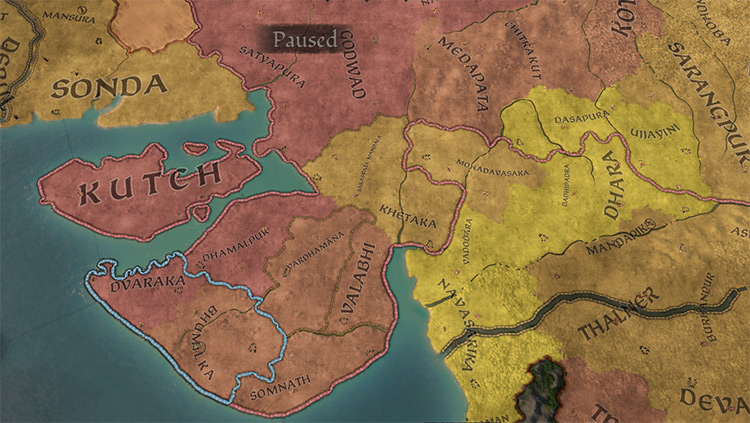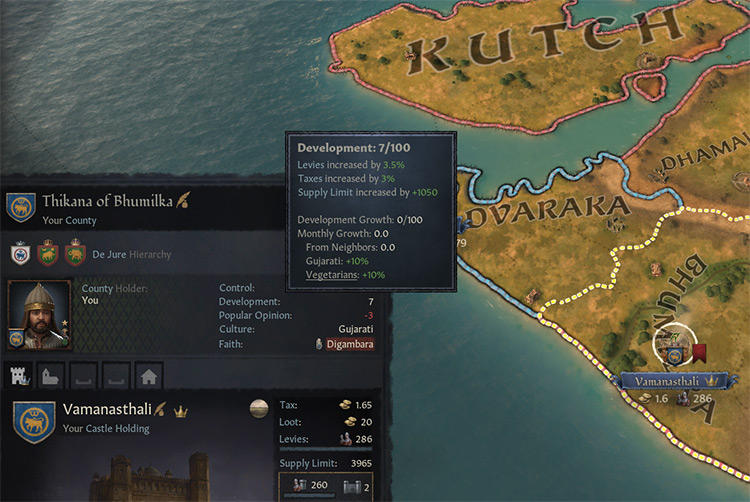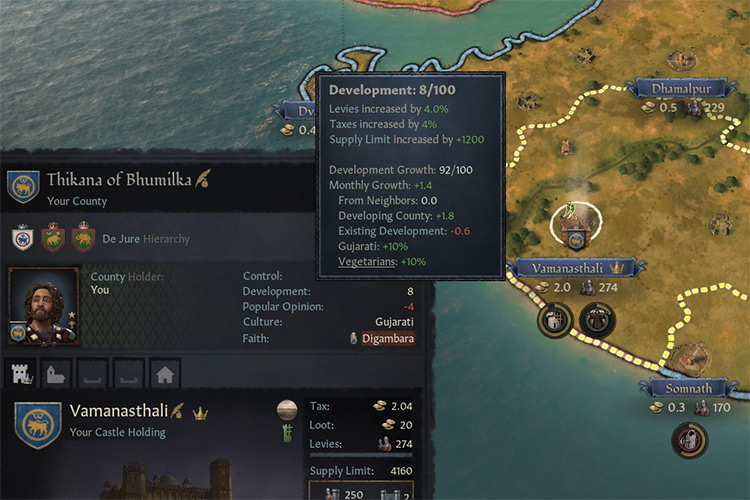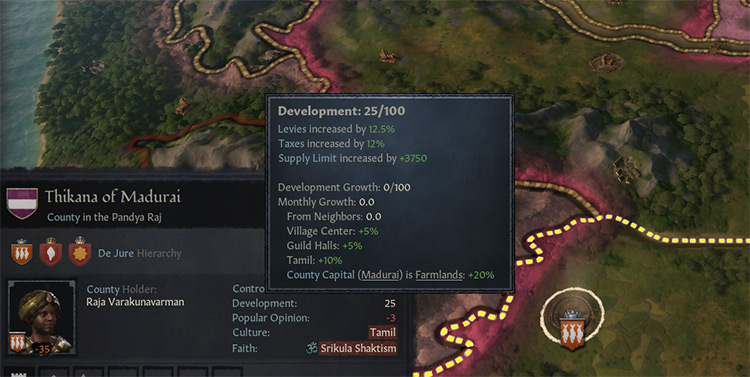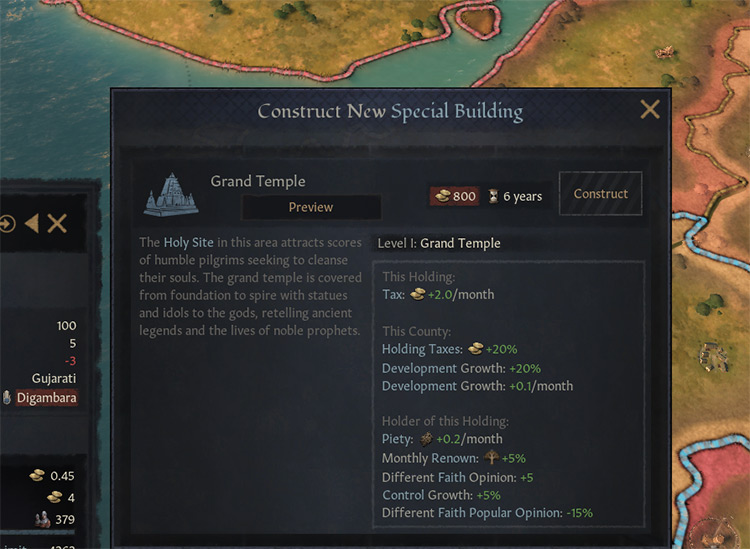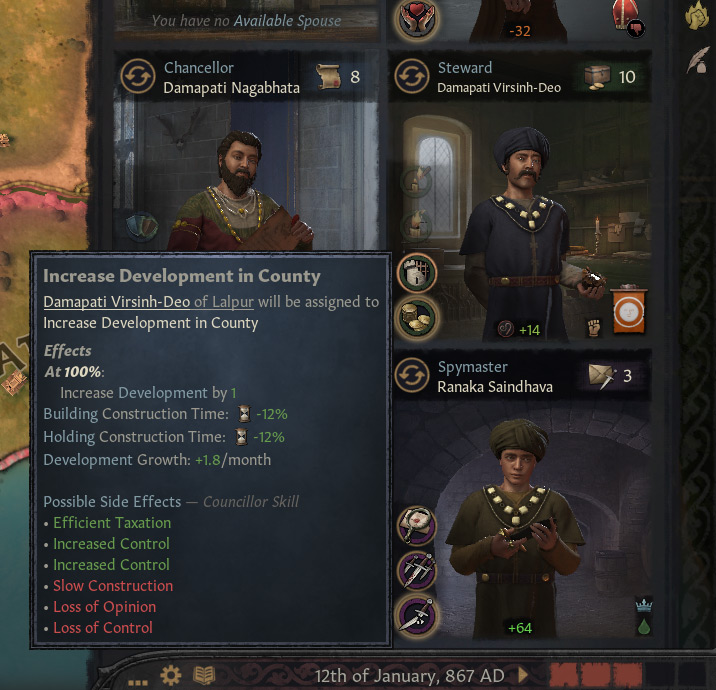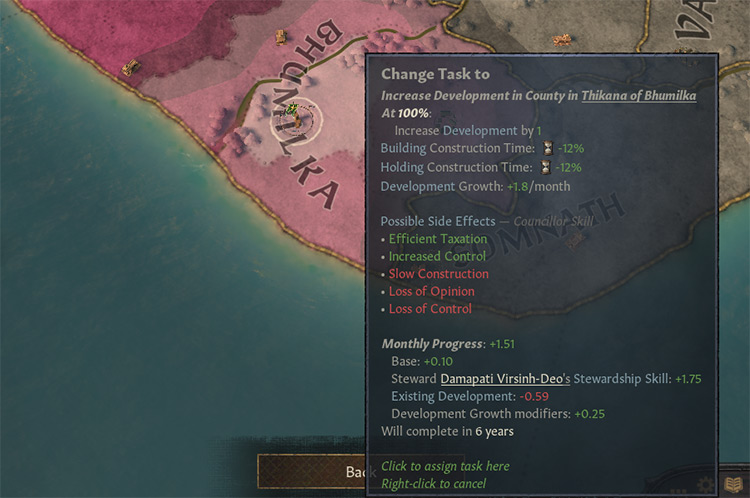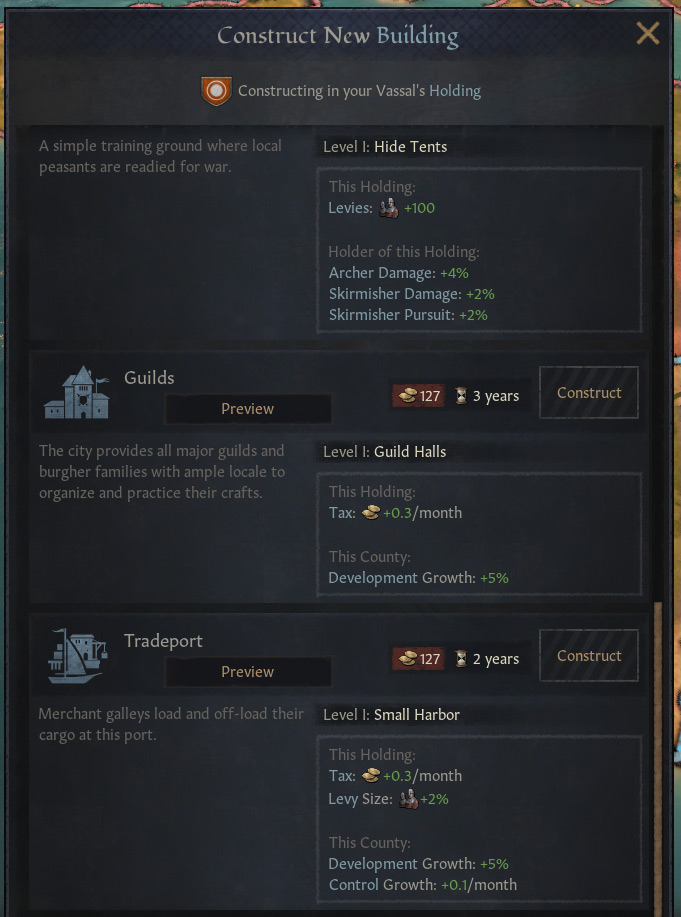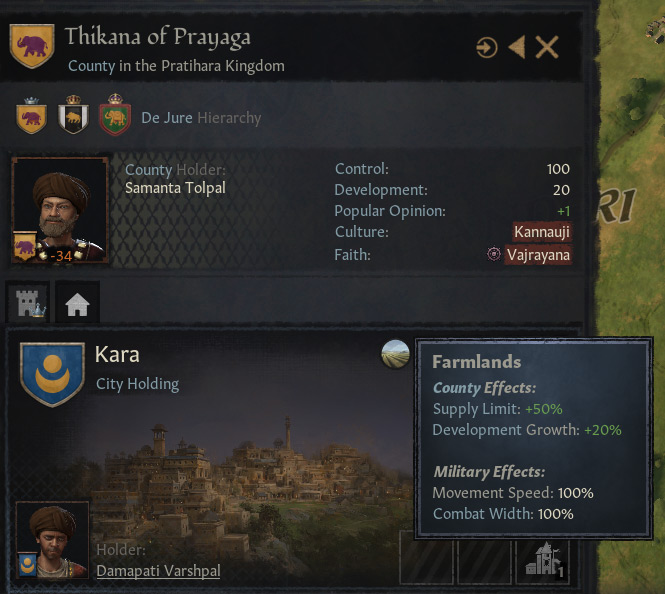The primary way you will find yourself affecting development is by creating buildings. We’ll examine this a bit closer in this guide, but certain buildings either passively develop a province, or speed up the rate at which development is increasing. Other than that, the fastest single province increase you can achieve is done by setting your court steward to the “develop county” task. And the more you understand how this mechanic works, the better you can manipulate the process to get the best results.
Part 1: What Does Development Do?
Each level of development gives an individual county a flat 150 bonus to its supply limit. However, for non-tribal rulers, the development will also increase taxes and levies. As per the Crusader Kings Wiki, each development point should increase the tax and levy size of a county by 0.5%. However, as shown below, this isn’t exactly the case. Each point is indeed increasing the supply limit by 150, as well as the levy size by 0.5%. However, it seems to be rounding non-whole numbers for tax down – since at 7 development it ought to be increased by 3.5%, but it’s only increased by 3%. This might be a typo, or the game has changed the statistic and the wiki hasn’t been updated. But either way, each development point will be improving a county in some way or another. And ultimately, the development of a county affects innovation gain rate. It isn’t a huge change, but the average development of all the counties of a specific culture increases the passive innovation gain rate.
Part 2: How To Increase Development
In the 867 start year, you will find yourself with counties ranging from 0 development to 25. Chances are, your counties will be far outshined by the 4 counties that start at 25 (Byzantion, Cholamandalam, Madurai, and Roma). Your goal will likely be to make your counties the shining beacons of progress, but how? There are two ways that a county increases its development: passive and active.
Passive Development
Counties may develop themselves in two ways. The first way is by using buildings. Certain buildings will either increase development, or increase the rate in which a county develops. The grand temple is an example of a building that does both of these things. Any building that says, “Development Growth: +X/month” will be passively increasing the county’s development. It will be incredibly slow development, but any bonus is welcome – especially ones that happen in the background. Buildings that increase development in this way are relatively rare though. Fortunately, all counties (regardless of any buildings) can develop passively. This is due to the neighbor bonus. Counties that are touching others will slowly develop all those lower than it. The rate at which this happens starts at a base of 0.1 development progress per month, multiplied by the difference in development. So if a county has a development of 10, and it’s surrounded on all sides by counties that are all 5, it will increase all of their development progress by 0.5 per month. With this in mind, the most efficient way to develop your realm is to space out various highly developed counties. How?
Active Development
By far the quickest way to develop a single county of interest is to set your court steward to the “increase development” task. When set to this task, your steward will stay in the county you set them in and develop it until you manually stop them. Here’s one example: In this example, my steward will take 6 years to increase the development of my capital province by 1. So how do you speed this up? The primary way to speed this up is, once again, buildings. In this situation you will be looking for buildings that say, “Development Growth: +X%”, as seen in the below image. Guilds and trade ports are not your only options for buildings to increase this rate, but they are very common. More importantly, these bonuses from buildings stack, so you can get a lot of bonus development growth rate in any given county from these. Another way to speed up this development is to lessen the penalty due to existing development. This penalty increases as your development gets closer to a set development level. Once this max development is met, you will face a massive penalty to developing a county that makes the process almost entirely pointless. However, this max development can be increased by innovations. Each innovation age tab will have its own innovation that raises this maximum. The first innovation raises this maximum to 20. Most cultures will start with this already researched. The next innovation increases the development penalty cap to 35. After this, it goes to 55, then 90. So to get the maximum of 100 development, you will have to fight through the maximum penalty eventually. Note: When the game is working as intended, this maximum is in relation to your Steward’s cultural innovations. If your culture has the max at 35, but your steward is of a different culture that is still at max 20, the huge penalty will be applied. And finally, the terrain type of a county applies a fixed (barring a few cultural traditions) bonus or penalty to development growth rate. Perhaps unsurprisingly, farmlands and floodplains provide the best bonuses, plains are neutral, and deserts/desert mountains are the worst. With these tips in mind, you can strategically develop your counties to make your realm the most prosperous in the entire game.
